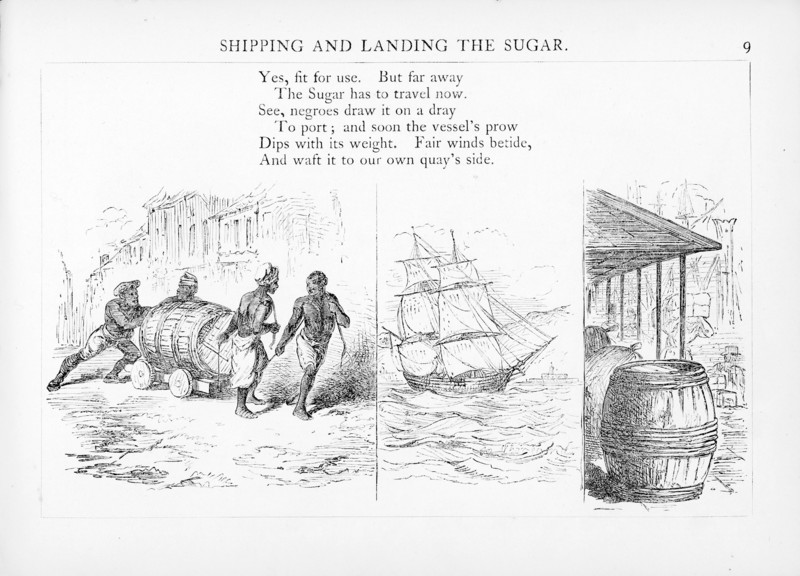The History of a Pound of Sugar
Item- Title
- The History of a Pound of Sugar
- Rhymes and Pictures about Bread, Tea, Sugar, Coals, Cotton
- Description
-
William Newman wrote a production story series on bread, tea, sugar, coals, and cotton, each printed separately or available together in a single volume. At the date of publication, slavery had ended in the British West Indies but not in the US, where the Civil War had just begun. This volume on sugar begins, on the title page, with white English children eagerly consuming information about sugar cane, delivered in the medium of a magic lantern show, and it ends with white English children eating sugar from a barrel outside of a general store. Creating parallels between these two acts of consumption equates reading with eating and asks readers to identify with the privileged position of white English child consumers. The children operate the magic lantern show themselves. Such visual control over the entire sugar-making process appears throughout the book. The spread showing “Planting,” for instance, is focalized through the perspective of the “Planter,” who “walks around / With eagle glance, and all controls” (p.3). Production stories like this one give children a visual “survey” of the process, using visual strategies such as the elevated view, that give a sense of ownership and control. As a result, child readers are asked to identify with positions of power, such as managers and overseers, rather than with characters performing physical labor or working with machines.
The book is a literal account of the material process of growing, harvesting, refining, and packaging sugar. But the process of refining sugar from brown sugar to white gives the text an opportunity to drive home racial hierarchies to readers. At this time, black workers, often slaves, created brown sugar, which was shipped to England, where free, predominantly white workers, refined the sugar to make it white. The description of this process passes judgment on the people who work the sugar at various stages: ‘Safe on our shores; the Sugar still / Is only “Raw,” or unrefined: / This is called “Moist.” The Baker’s skill, / With fire and various aids combined, / Makes of it “Lump”—crisp, crystal white, / Sweet to the taste, and fair to sight’ (p. 10). Such racist comments on the superiority of whiteness are commonplace in nineteenth-century sugar production stories.
The cover’s portrayal of other mediated versions of this story suggests that publishers Griffith & Farran may have produced additional learning aids to accompany Newman’s books, such as magic lantern slides, games, or prints to hand on walls. Selling different mediums to teach this material was a strategy used by early-nineteenth-century publisher John Wallis.
- Creator
- Newman, William
- Date
- 1861
- Subject
- production story
- sugar
- bread
- Rights
- Public domain
- Obtained permission for digital images
- Courtesy of Baldwin Library of Historical Children's Literature, George A. Smathers Libraries, University of Florida
- Source
- Read the full book at Baldwin Library of Historical Children's Literature, Digital Collection
- Identifier
- Baldwin Library of Historical Children's Literature, George A. Smathers Libraries, University of Florida, Call Number: 15h1707
- Bibliographic Citation
- Newman, William. (1861). The History of a Pound of Sugar. In Rhymes and Pictures about Bread, Tea, Sugar, Coals, Cotton, Gold: 72 Illustrations. London: Griffith & Farran, successors to J. Newbery.
- Media
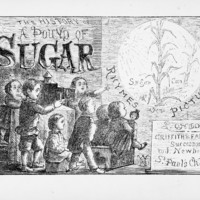 The History of a Pound of Sugar, cover
The History of a Pound of Sugar, cover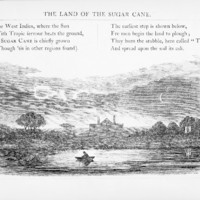 The History of a Pound of Sugar, p1: "The Land of the Sugar Cane"
The History of a Pound of Sugar, p1: "The Land of the Sugar Cane"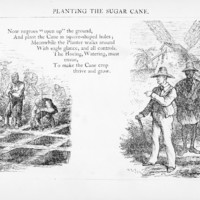 The History of a Pound of Sugar, p3: "Planting the Sugar Cane"
The History of a Pound of Sugar, p3: "Planting the Sugar Cane" The History of a Pound of Sugar, p9: "Shipping and Landing the Sugar"
The History of a Pound of Sugar, p9: "Shipping and Landing the Sugar"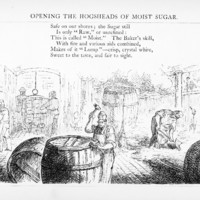 The History of a Pound of Sugar, p10: "Opening the Hogsheads of Moist Sugar"
The History of a Pound of Sugar, p10: "Opening the Hogsheads of Moist Sugar"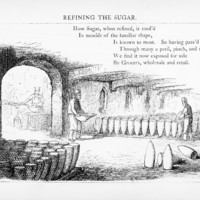 The History of a Pound of Sugar, p11: "Refining the Sugar"
The History of a Pound of Sugar, p11: "Refining the Sugar"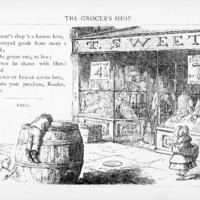 The History of a Pound of Sugar, p12: "The Grocer's Shop"
The History of a Pound of Sugar, p12: "The Grocer's Shop"



